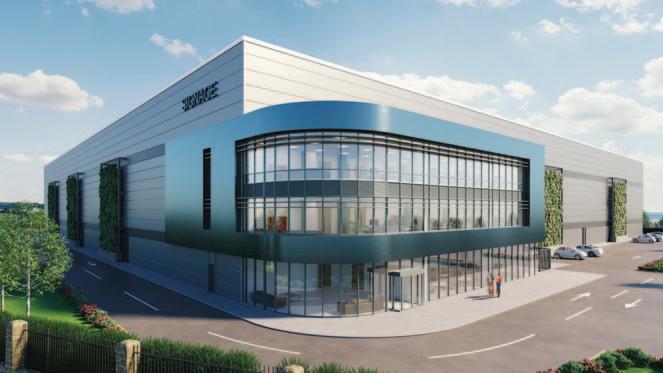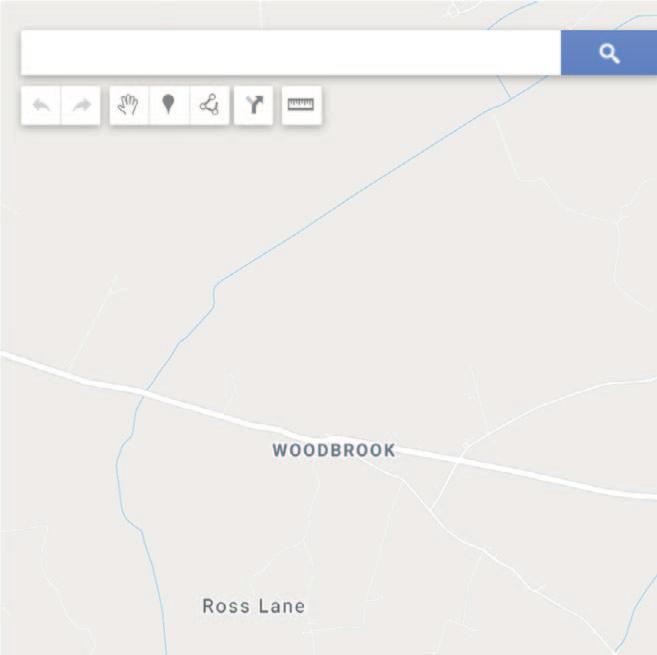
6 minute read
n Warehouse evolution
WAREHOUSE EVOLUTION




ith the ESRI now predicting a 7.1% contraction in the Irish economy this year, it seems certain that property values in all sectors will fall in the short term. The extent of the decline in consumer demand will depend on the level of business closures and job losses. In theory, companies in transport and logistics, pharma, food supplies, healthcare supplies and technology should thrive, while many active in or supplying the hospitality, airline, retail and automotive sectors will suffer. The availability of industrial and warehousing space is at a historic low, and a slump in demand may free up units, particularly smaller buildings where occupiers may not be financially resilient. Many developers of larger warehouses who had been expected to commence construction of new buildings imminently have paused their plans and, unless there are mass business failures, it is unlikely that supply will increase dramatically in these larger sizes. That said, a fall in consumer demand will impact demand for warehousing generally. With most shops closed and many people working from home, one consequence of this crisis may be to accelerate the adoption of W Kevin McHugh Director, HARVEY, Industrial Property Specialists FEATURE THIS ARTICLE WAS ORIGINALLY WRITTEN BEFORE THE OUTBREAK OF COVID-19 IN IRELAND. WHILE IT MAINLY DEALS WITH TRENDS IN THE IRISH AND EUROPEAN INDUSTRIAL AND LOGISTICS PROPERTY MARKETS, IT WOULD BE REMISS NOT TO ADDRESS THIS SEISMIC EVENT. online retailing. Another mitigating factor might be that companies increase inventory levels to make up for volatility in the supply chain. Unfortunately, the only thing we can be sure of at the moment is what we don’t know. Industrial and warehousing trends The e-commerce effect One area of growth in the industrial and logistics property sector that has caught investors’ attention is e-commerce or online retail. In June 2019, Blackstone bought a portfolio of US warehouse investment properties for $18.7bn. In Europe, it has amassed a warehouse portfolio worth €8bn in a venture with M7 Real Estate, and has signalled its intent to grow this. Blackstone believes that the growth in e-commerce is only in its infancy, and that this will drive significant demand for warehousing and logistics property into the future. Not only is e-commerce disrupting long-established retailing patterns on the high street, but online retailers require three times as much warehouse/logistics space as traditional ‘bricks and mortar’ NEW WAVE OF WAREHOUSES IPUT Dublin Real Estate is developing two warehouse projects, including this one at Aerodrome Business Park in Rathcoole.
retailers, according to Datex, a leading US warehouse management systems expert. In Ireland, online retailing makes up around 12- 13% of the retail market, but experts predict that this has the potential to grow exponentially. For example, according to its Office for National Statistics, the UK has already hit 20% market penetration, and this is predicted to grow to 25% by 2023. Surprisingly, some large EU countries such as Italy and Spain are lagging behind at around 5%, so these markets could see some of the strongest growth in Europe in future.
Last mile logistics Another trend emerging in major European cities is ‘last mile’ or ‘last link’ logistics. This is the last leg of the journey when delivering goods to consumers in densely populated urban centres. The current thinking is that this additional link to the supply chain is only required where delivery times from the distribution warehouse are in excess of 30 minutes; therefore, they are not yet a feature in Ireland. In large cities such as London and Paris, companies are competing for the limited number of centrally located warehouses. Many of these might have a higher value if redeveloped into residential or offices, so tend to be expensive by warehouse standards, but they are becoming a more important feature because they can drive more efficiencies than any other part of the supply chain.
Domestic warehousing trends In Ireland, the highest demand tends to come from: transport and logistics (including ecommerce); traditional retail; wholesale; pharma; construction; food; and, data centres. In recent years, Ireland has been following European and international trends with growing demand for larger distribution warehouses. Both domestic and international companies have scaled up and we are now seeing a much larger proportion of development devoted to ‘big box’ warehousing (9,300 sq. m./100,000 sq. ft. +). In addition, it looks like Ireland will see its first e-fulfilment centre for pure-play online retail in the coming year. In simple terms, this is a large warehouse used by pure online retailers where online orders are picked, packed and dispatched. As the fastest growing economy in Europe for the past five years, Ireland has attracted more than its fair share of interest from international property investors. The profile of many industrial and warehouse developers has changed too. Many of the new wave of developers are backed by international private equity. The pension fund IPUT Dublin Real Estate has made the leap from warehouse investor to developer, and has two new projects: Aerodrome Business Park in Rathcoole; and, Quantum Distribution Park in Kilshane near M50 Junction 5.

Supply/demand imbalance Naturally, the Covid-19 crisis is likely to lead to an increase in warehousing supply, at least in the short term. Up to this point, vacancy rates had been falling throughout Europe and are below 4% in many countries. The supply/demand mismatch, coupled with extremely high construction costs, had driven the growth in prime rents in Dublin, which now range from €105-€112 per sq. m./€9.75-€10.45 per sq. ft. Except for London Heathrow, these are the highest rents in Europe. That said, warehouse real estate costs typically represent a small proportion of overall supply chain costs (less than 5%, according to international research from Prologis and The Sequoia Partnership). Both LEED and BREEAM certification are now being considered by most developers, and new sustainable features include: enhanced building envelope thermal performance; PV panels; electric car charging points; sensor-controlled LED lighting; and, rainwater harvesting. Large warehouse occupiers have identified benefits such as lower operating costs, brand enhancement, employee recruitment, retention and productivity, and investor appeal, and are more likely to choose a building that best meets these needs. As the importance of sustainability grows in the public mind, it is inevitable that the gap in value between highly sustainable and less sustainable buildings will widen.
Future As with many things in the global economy, warehousing in Europe is becoming more homogenised and this is filtering down to Ireland, with common international owners and occupiers, larger warehouses and standardised design features. As the supply chain continues to evolve, so too will warehousing trends, such as use of automation and robotics. While it is hard to see past the current crisis, the market will recover and the trends we have seen recently that have driven demand for warehousing will continue into the future.
Sustainability Another trend in European warehousing that has arrived in Ireland relates to sustainability. With global investors and international warehouse occupiers increasingly focused on the environmental impact of their property portfolios, developers in Ireland are beginning to design warehousing with greater environmental credentials than required by the new near zero energy building (NZEB) rules.









